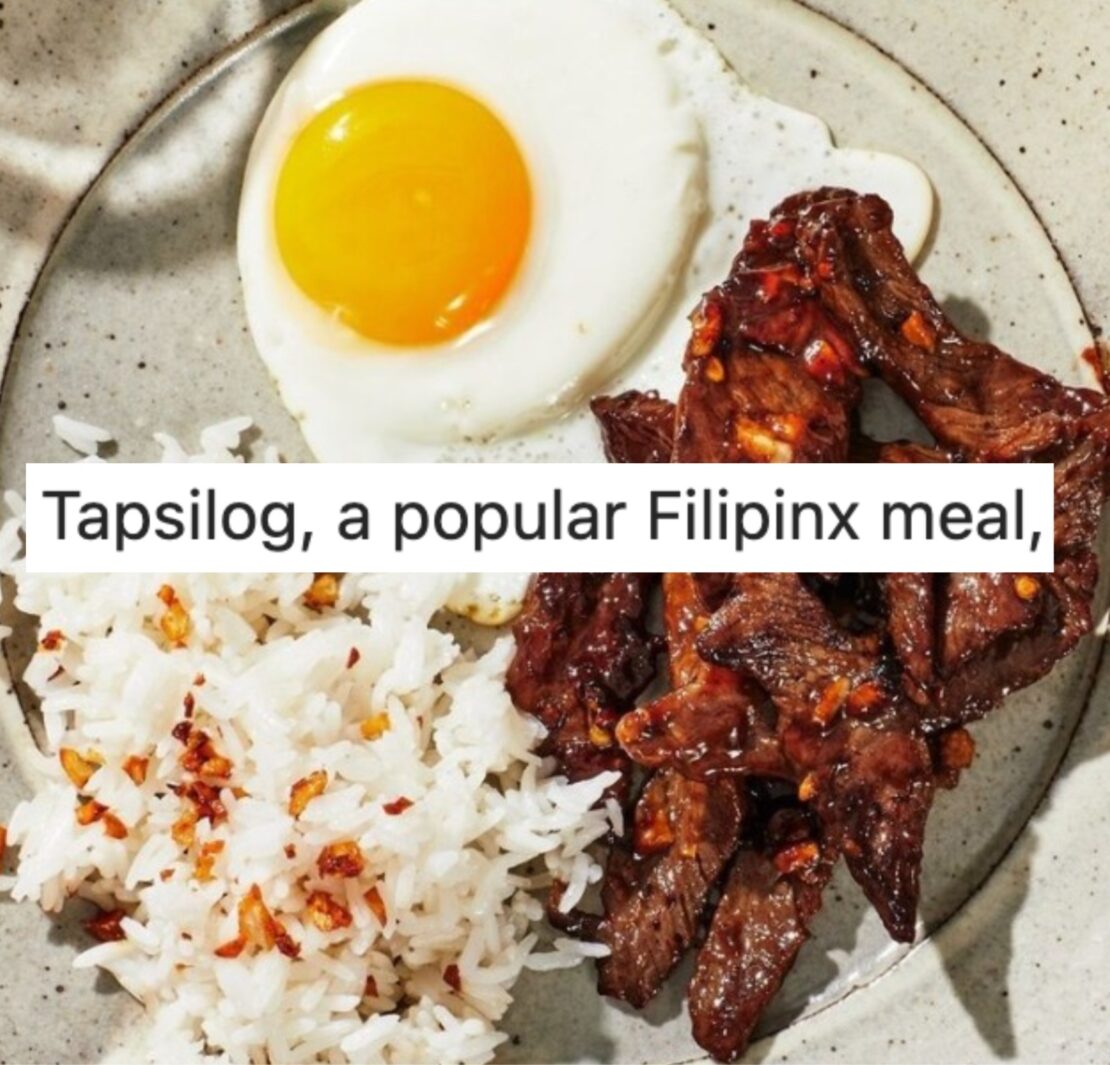Ah Bon Appétit, just when you think the “prodigal” child of food media has redeemed itself, it comes up with new questionable things. Filipinos woke up on a Saturday morning mad at a photo of tapsilog. A first, given it’s a breakfast staple on Pinoy tables. This is a feat for BA, as I have seriously never met anyone who disliked the triumvirate of tapa, sinangag, and fried egg.
And I get the rage. There is plenty to be mad about Filipino-British food writer and recipe developer Arlyn Osborne’s tapa. Let’s start with the obvious: the stark misproportion of the three core ingredients. Who eats tapsilog with the little amount of sinangag, seriously? I don’t know about you, Americans, but this ratio is criminal! Not to mention the absence of a sawsawan? Though, to be fair to Osborne, she did vaguely suggest in the recipe to serve it with spicy vinegar, fresh tomato, cucumber, or atchara. This is like if some white person-ran hippy “modern” Filipino restaurant decided to dupe unknowing diners into an overpriced tasting menu of literally one of the most common Pinoy meals.
But that’s not all. BA decided to call it “a popular Filipinx meal,” which really sent Filipino citizens into a frenzy. The term, which borrows from the popular American term for genderless identities e.g. Latinx, has been the ire of many motherland-born Filipinos and even some Filipinos born in the US. Many note that Filipino is already a genderless term since it is a genderless language (there is only “siya” or “sila” as pronouns, nothing specific as in the English “he” or “she”), thus there is no need for such a term as Filipinx.
In recent cultural memory, a cookbook by Filipino Hawaiian food writer Ligaya Mishan and Filipino American chef Angela Dimayuga of Mission Chinese fame (and semi demise) uses the term “Filipinx” to describe a breadth of Filipino American recipes. In the book, the term is pronounced “fi-luh-pee-NEKS” and described as “a gender-inclusive term for people of Philippine origin or descent. From Filipino/Filipina, words first used to describe natives of the Philippines in the late nineteenth century.”
Tagging it as a “Filipinx meal” implies that it is some kind of new recipe, that only existed until recently along with the term, which it is not. As Osborne points out in the recipe, “tapa has origins in the pre-refrigeration era,” and for your reference, ice was only introduced to the country in the 1920s.
I personally don’t have an issue with the use of Filipinx as not to invalidate the experience of transplanted and US-born Filipinos, just saying. But if you call tapsilog Filipinx and also serve it with barely a cup of rice, that I find issue with. But that’s just me. To each their tapsilog, I guess?




